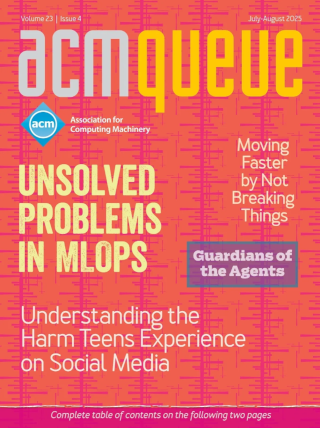In this video interview conducted by Kate Matsudaira, Nicholas Zakas discusses the current state of front end engineering and Web development. https://vimeo.com/71119898
Conrad Watt - Concurrency in WebAssembly
Mismatches between the interfaces promised to programmers by source languages and the capabilities of the underlying web platform are a constant trap in compiling to Wasm. Even simple examples such as a C program using the language's native file-system API present difficulties. Often such gaps can be papered over by the compilation toolchain somewhat automatically, without the developer needing to know all of the details so long as their code runs correctly end to end. This state of affairs is strained to its limits when compiling programs for the web that use multicore concurrency features.
Daniel Ehrenberg - When Is WebAssembly Going to Get DOM Support?
What should be relevant for working software developers is not, "Can I write pure Wasm and have direct access to the DOM while avoiding touching any JavaScript ever?" Instead, the question should be, "Can I build my C#/Go/Python library/app into my website so it runs with good performance?" Nobody is going to want to write that bytecode directly, even if some utilities are added to make it easier to access the DOM. WebAssembly should ideally be an implementation detail that developers don't have to think about.
Ben Titzer - WebAssembly: How Low Can a Bytecode Go?
Wasm is still growing with new features to address performance gaps as well as recurring pain points for both languages and embedders. Wasm has a wide set of use cases outside of the web, with applications from cloud/edge computing to embedded and cyber-physical systems, databases, application plug-in systems, and more. With a completely open and rigorous specification, it has unlocked a plethora of exciting new systems that use Wasm to bring programmability large and small. With many languages and many targets, Wasm could one day become the universal execution format for compiled applications.
Andy Wingo - WebAssembly: Yes, but for What?
WebAssembly (Wasm) has found a niche but not yet filled its habitable space. What is it that makes for a successful deployment? WebAssembly turns 10 this year, but in the words of William Gibson, we are now as ever in the unevenly distributed future. Here, we look at early Wasm wins and losses, identify winning patterns, and extract commonalities between these patterns. From those, we predict the future, suggesting new areas where Wasm will find purchase in the next two to three years.
Front end engineering and web development used to be scoffed at by back-end engineers. However, working in the front end of a Web application is so much more than just HTML and CSS these days. Many Web applications can have a whole MVC inside the view, and understanding the client is paramount to delivering expected performance and app-like interaction. Nicholas Zakas takes us through his journey working on the client side, explains the evolution of front-end engineering, and answers questions like "when should you use jQuery?" Nicholas currently works at Box, and was previously the front-end tech lead for the Yahoo! homepage and a contributor to the YUI library. He is also a keynote speaker, and author of 4 books: Maintainable JavaScript, Professional JavaScript for Web Developers, High Performance JavaScript, and Professional Ajax.
Comments
(newest first)



